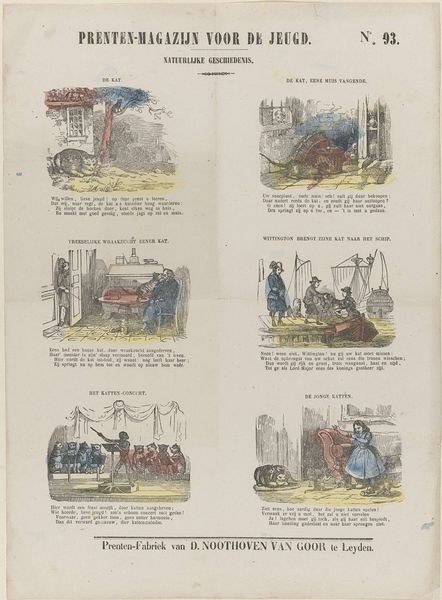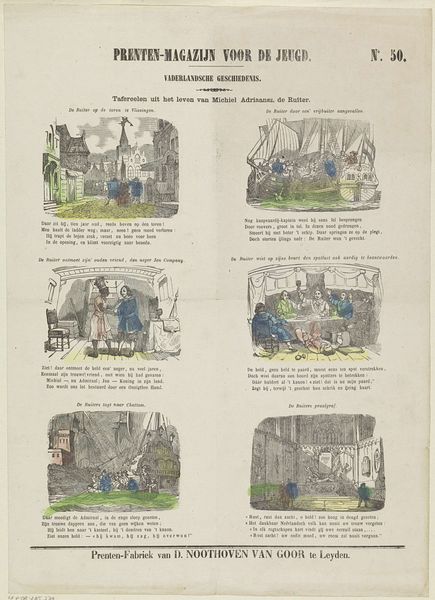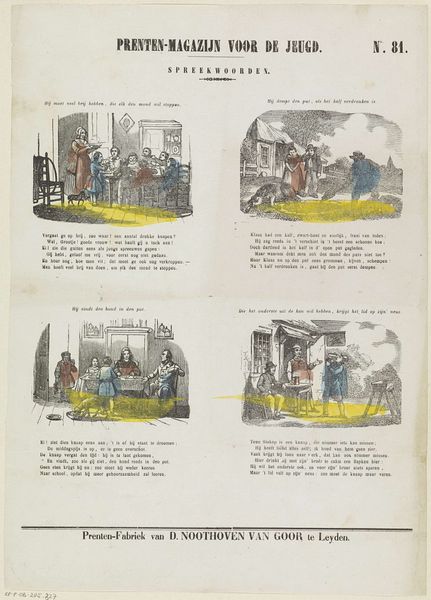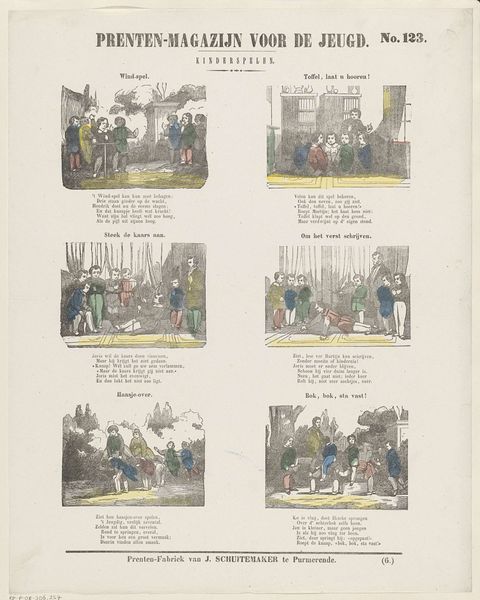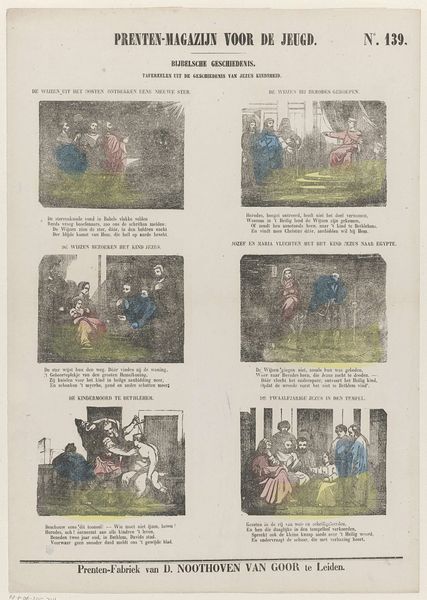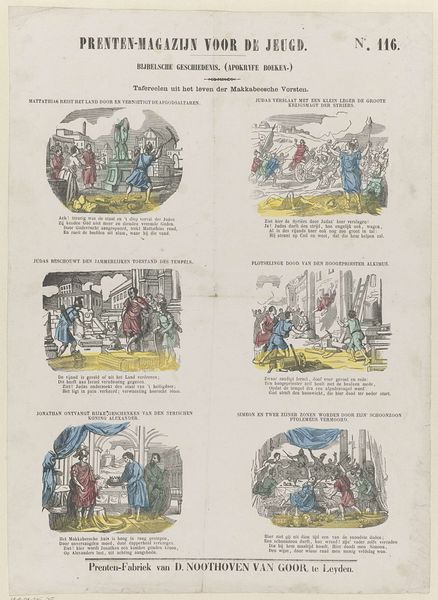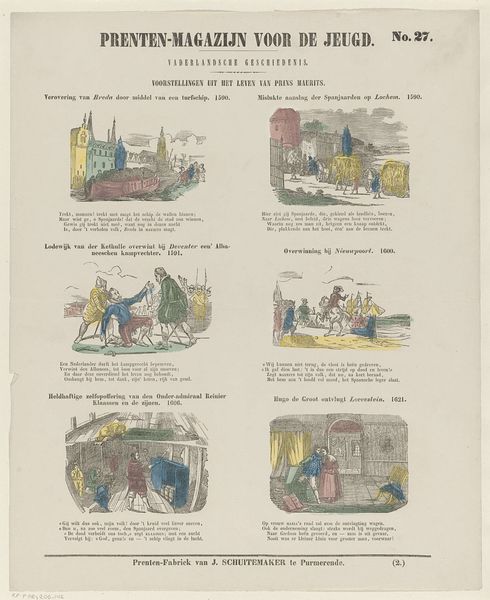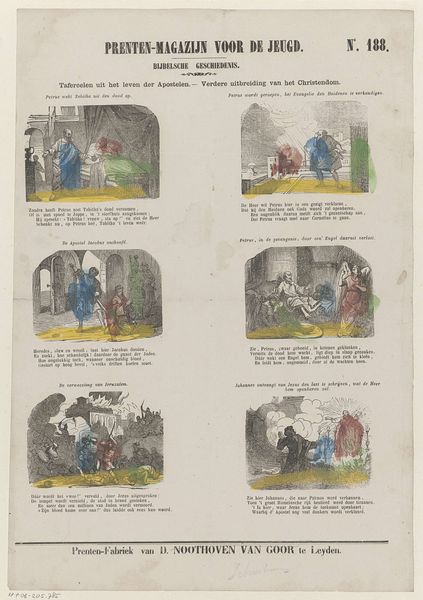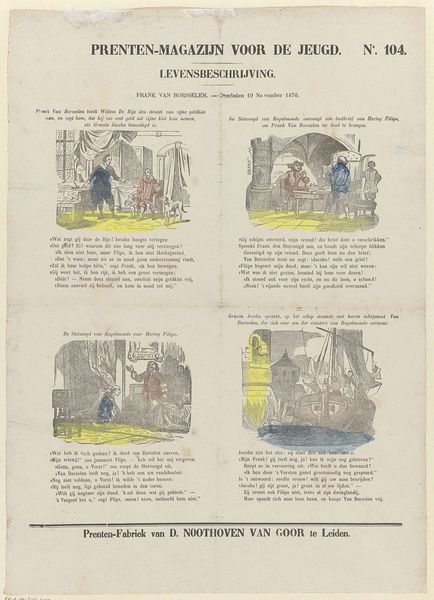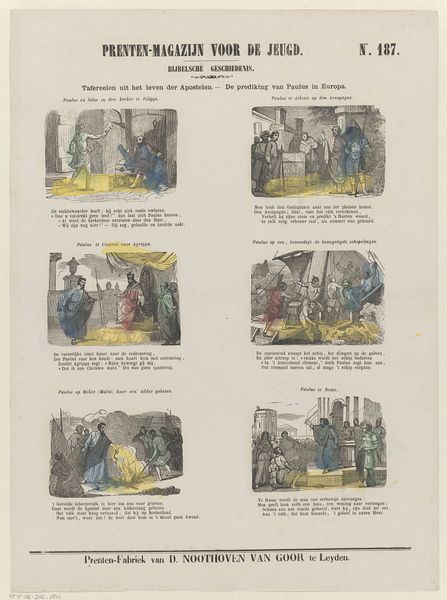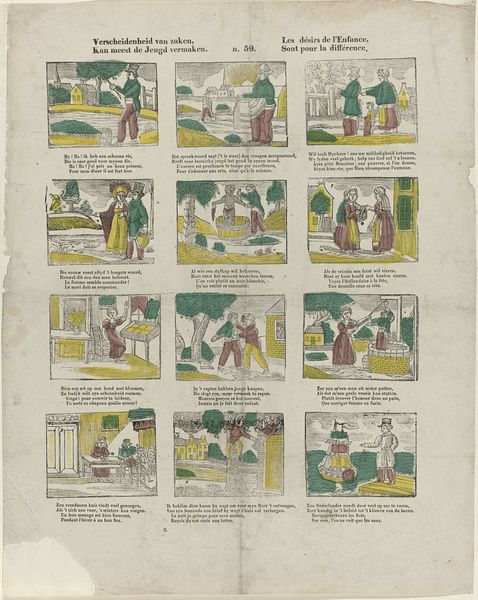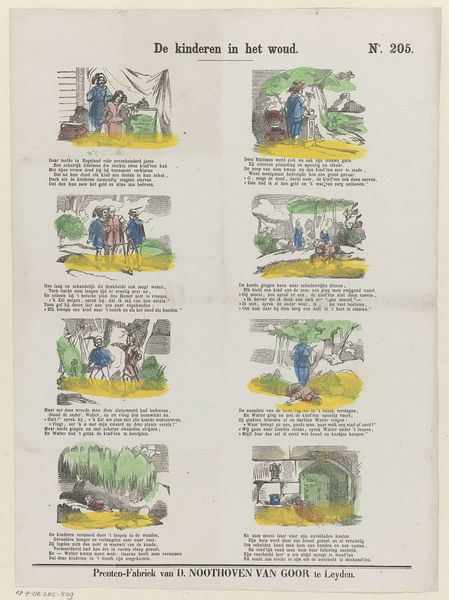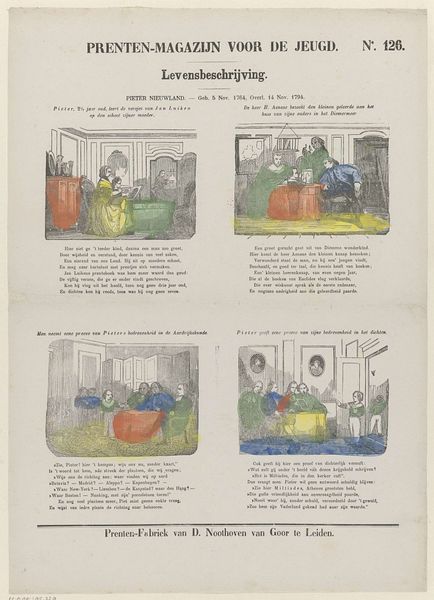
graphic-art, lithograph, print
#
graphic-art
#
aged paper
#
quirky sketch
#
narrative-art
#
lithograph
# print
#
sketch book
#
hand drawn type
#
personal sketchbook
#
sketchwork
#
fading type
#
sketchbook drawing
#
genre-painting
#
storyboard and sketchbook work
#
sketchbook art
Dimensions: height 420 mm, width 336 mm
Copyright: Rijks Museum: Open Domain
Curator: This lithograph, titled “Avonturen van Joris Prop,” dating roughly from 1850 to 1881 and attributed to Dirk Noothoven van Goor, it’s quite a busy print! With these little comic panels, the aged paper, and the narrative aspect, it has the feeling of a storyboard or an old personal sketchbook. What do you make of it? What stands out for you? Editor: The fact that it’s a lithograph, intended for mass production, yet mimics a personal sketchbook. That contrast is interesting. These little scenes seem to chronicle a narrative – almost like early comic strips made on an industrial scale. It makes me wonder about the intended audience and their means. What kind of stories were being told to children back then? Curator: Exactly. Notice the factory listed at the bottom—Prenten-Fabriek. It tells us about the industrialized process, how children stories where created by factories of printing, by companies creating “content” for kids. This wasn't handcrafted, one-off art. It was manufactured, consumed, and likely discarded or recycled after use, contributing to the broader economic system. Who profited from the material? And how was this distributed amongst children and families of different classes? Editor: That reframes everything for me! Seeing it as a manufactured product, instead of just quirky art, really shifts my perspective. It makes me think about the social context surrounding this “youth magazine.” What about the content and values within this stories? Curator: Precisely. What values about labour, and property are imparted here, within an economic system? Who holds the axe or weapon? Are those factory tools transformed to the street? Editor: It's less about individual expression and more about the means and relations of production in the mid-19th century. Thank you! Curator: My pleasure.
Comments
No comments
Be the first to comment and join the conversation on the ultimate creative platform.
